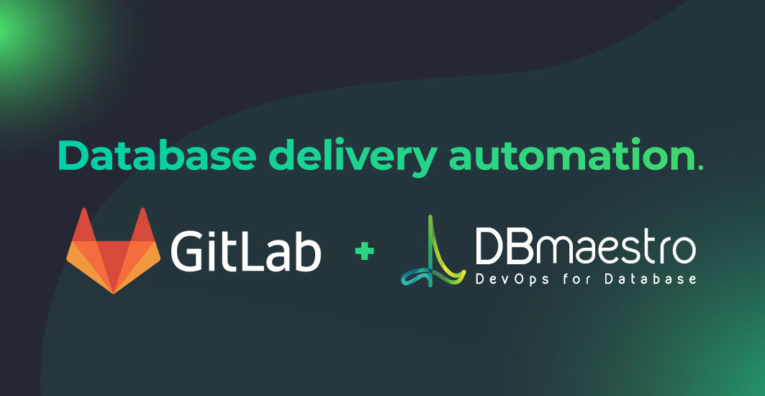Glossary > Database as Code
What is Database as Code?
Database as code is an approach to managing databases that treats them in the same way that software developers treat their applications. It’s a way to automate the management of a database by using programming languages such as SQL and other scripting languages. By writing code to define the structure and content of a database, developers can make sure that the database remains up-to-date and consistent, and can quickly make changes. This approach helps to reduce the time and effort needed to maintain and update a database, as well as reduce the risk of errors.
The Benefits of Using Database as a Code
Database as code offers many advantages to developers and businesses. By using code to define and maintain a database, developers can quickly and easily make changes without having to manually alter the database. Here is the full list:
1. Enhanced control and traceability of database versions
With Database as Code, database schema and change scripts are treated as code and can be managed alongside application source files in version control systems like Git or SVN. This approach enables efficient tracking, history, and auditability of database objects. As a result, reviews of database schema changes can be conducted easily and the Schema as Code can be monitored as effortlessly as application code.
Database as Code provides developers with a comprehensive audit trail, making it easy to track changes over time and roll back to a previous state if needed. Reverting changes can be invaluable as it helps to pinpoint the exact point where a database issue was introduced, reducing the risk of risky database deployments.
Defining database versions also facilitates database migrations, making them more reliable and straightforward. Once a database change is approved, a migration file can be created, and the migration will run automatically when the application or service is deployed. Automated audits can also help organizations comply with regulatory requirements related to database access control.
2. Streamlined database development workflow
By automating database provisioning and deployment, Database as Code simplifies database development and incorporates it into DevOps workflows. Automation eliminates manual processes, ensuring that database schema changes follow the same version control process as application code, with database schema changes applied automatically to database instances.
Since the migration files for Schema as Code are applied in the same way as any other code changes, database deployments can be accomplished with a single command, making it much easier to manage and deploy.
As a result, developers can spend less time dealing with database-related tasks such as setting up database tables or writing database scripts, allowing them to focus more on developing application code and boosting developer productivity. By allowing developers to treat database changes the same way they would application code, Database as Code significantly accelerates the database development cycle.
3. Improved collaboration and consistency
Database as Code helps standardize database configuration and development processes across teams and organizations, making database deployments more consistent and reliable.
By automating database development, database administrators (DBAs) can save time on routine tasks and focus more on database optimization and performance tuning. Eliminating tedious manual tasks ensures that database changes are deployed much faster and more securely.
Database as Code also enables developers to collaborate with DBAs on database schema changes and encourages peer review of database changes. Improved communication helps catch issues and errors before database deployment, saving time and effort in the long run.
Moreover, it ensures database consistency across environments, since database changes are applied from a single source of truth, the database version control system. Applying database changes manually across different database instances often creates issues.
Since database changes can be stored as code in SQL files and versioned, they can be reused across multiple database instances or environments. Reusing schemas eliminates the need to repeatedly code the same database changes and ensures consistency and accuracy, as the same change can be applied consistently to multiple environments.
4. Reduced risk
With Database as Code, database history is tracked and audited automatically, providing insight into the database development process and documentation of all database changes over time.
Since Database Infrastructure as Code provides a single source of truth, it makes it much easier to keep multiple database environments in sync. All database changes can be applied to the different database instances directly from the database version control, ensuring that all database environments have the same data.
By utilizing automated database deployment tools, Database as Code helps reduce the risk of introducing errors during database deployments. Since all database changes are tracked in version control, any issues can be easily identified quickly and reverted if needed.
5. Leverage the Benefits of Automation
Database changes can now be deployed quickly with minimal manual intervention, eliminating configuration drift and reducing the risk of introducing errors when manually deploying changes.
Working with Database as Code enhances the reliability of database changes by streamlining the process and enabling more rigorous review and testing before release.
Database as Code also lets database administrators control who can make schema changes, giving access only to those with appropriate permissions. To minimize the risk of unauthorized modifications, organizations need to pay attention to tooling and workflows around
List of “Database as Code” Rules
When using database as code, it is important to follow a few key rules:
- Define the structure of the database: Before you begin writing code, it is important to define the structure of the database. This includes defining the tables, columns, and data types of each element.
- Test the code before deployment: Before deploying your code, it is important to test it to make sure it is working correctly. This can be done by running the code in a development environment or using a unit testing framework.
- Version control your code: To ensure that you can easily revert to a previous version of your code, it is important to maintain version control. This can be done by using a version control system such as Git.
- Automate database tasks: To reduce the time and effort required to maintain and update a database, it is important to automate as many tasks as possible. This can be done by using a scripting language such as SQL, or a task automation tool such as Jenkins or Azure DevOps.
By following these rules, developers and businesses can ensure that their database is up-to-date, consistent, and running optimally. Database as code is an incredibly powerful tool for managing databases, and can help to reduce the time and effort required to maintain and update a database.




